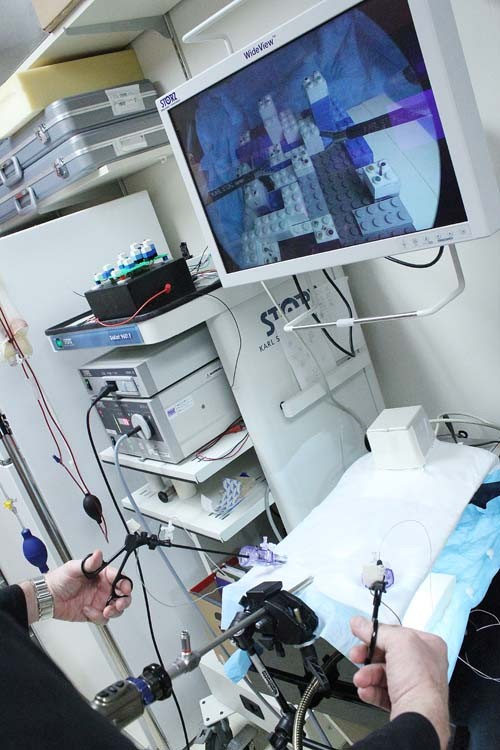UA researchers have developed a first-of-its kind surgery simulator that could make the university one of the top institutions in operation room training.
CAST, or Computer Assistant Surgical Trainer, is a computer-based program that allows students to perform laparoscopic surgery in a simulated environment that is not too far from reality.
The computer program uses an electric magnetic field to track the every move of the surgeon on a three-dimensional monitor sixty times per second. The program then compiles the data from each movement after the surgery is completed, like a scorecard.
“”Imagine the old game of Operation, and just up the anti,”” explained Allan Hamilton, professor of surgery. “”The computer can actually determine who is a beginner, who is intermediate and who is an expert.””
The Department of Electrical and Computer Engineering and ASTEC, Arizona’s Simulation Technology and Education Center, collaborated on the CAST project in 2006 because they wanted to find a better way to teach students surgery, said Dr. Chuan Feng, Research Assistant Professor with the Department of Electrical and Computer Engineering.
Today, CAST is in its third generation and will soon be integrated with simulated human tissue that has already been developed by ASTEC, he said.
Scientists boast the program can even communicate with the surgeon, telling him or her where to go– and warn them to stay away from certain anatomical structures, said David Biffar, ASTEC Chief of Technical and Laboratory Services.
“”There are voice navigational prompts for when you are traveling along a certain trajectory– so it will suggest a better line of movement by saying, ‘up’ ‘down’ ‘left’ ‘right’,”” said Biffar, who has worked with the voice navigational generation of CAST. “”The voice recognition could eventually have implication in actual surgery.””
Program leaders say CAST is a revolutionary training tool because it has the ability to sample hundreds of pieces of data and weigh certain factors that could not be measured before.
“”In the past, a ‘good’ surgeon was determined by a stopwatch and time spent in the operation room,”” Hamilton said.
Because of the program, researchers around the country can now distinguish a strong surgeon by the smoothness of his or her movements, coupled with speed and accuracy.
Research has shown that students and professionals who practice with simulation surgery will reduce their time in the operating room by thirty-five percent, along with a thirty- percent reduction in technical error. Because of this, CAST is an invaluable teaching tool to have at the UA, project officials said.
Stay with DailyWildcat.com for more coverage









